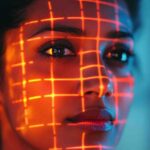Yoti has hit an important milestone in its work on developing facial recognition technology. The company says that version three of its MyFace Match model now has a True Positive Rate (TPR) of 99.9 percent.

TPR is an important concept when assessing a facial recognition model’s performance. Essentially, it indicates a model’s ability to successfully match two images of the same individual. When measured against the False Positive Rate – which indicates how often the wrong match is produced – it offers a picture of the model’s overall accuracy.
In a blog post, Yoti explained that its most important assessment tool was looking at the model’s TPR when a threshold for False Positive Rate was set to 10(-6), meaning any more than one false positive in a million would be unacceptable. In that scenario, Yoti’s True Positive Rate reached 99.9 percent. Effectively, that means 999 of every thousand users would be correctly identified, with one being flagged for further checks; while only one in a million would be matched incorrectly.
The achievement is especially remarkable given how quickly it has come about. In recent years, Yoti has tended to focus its R&D efforts on its liveness detection and age estimation models. Liveness detection has emerged as a critical component of face-based identity systems due to the escalating threat of presentation attacks, in which fraudsters seek to impersonate genuine users—a fraud trend that has been accelerated by the emergence of AI-generated deepfake technology.
Age estimation, meanwhile, has been an important endeavor for Yoti as the company has sought to establish its identity platform as a key tool in securing age-gated content and platforms. Wizz, for example – a social media app designed for kids – embraced Yoti’s technology earlier this year; and Instagram started using it to enforce age requirements back in 2022.
Facial recognition and face matching lie in an adjacent technology category with substantially different engineering demands. And in its blog post, Yoti emphasized that it was “only recently” that its team started working on in-house face matching models.
The Yoti team may have learned a thing or two from ROC, a US-based facial recognition specialist that announced a partnership with Yoti in December. ROC’s technology has attained Level 2 of iBeta’s rigorous Presentation Attack Detection evaluation program, and its facial recognition system has delivered solid accuracy levels in independent testing.
Responding to FindBiometrics via email, a Yoti representative explained that the two companies’ technologies have been leveraged in parallel. “We are still using ROC.ai but also developing our own face matching solution,” the representative said.
While Yoti’s own testing of its in-house technology has yielded strong results, the company is looking to have those results validated by a third party. The National Institute of Standards and Technology is currently evaluating Yoti’s previous face matching model through its Face Recognition Vendor Test, with results expected imminently. Once those come in, Yoti says it will submit V3 – or possibly a further refined version of the model – for evaluation, and is aiming to do so this June.
–
March 12, 2024 – by Alex Perala








Follow Us